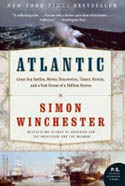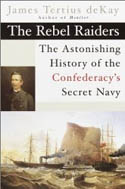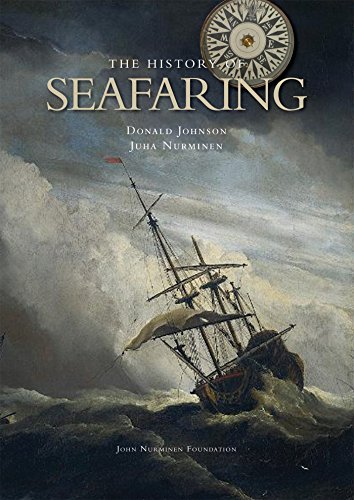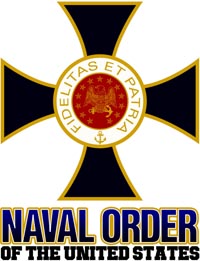News and Tall Tales

Murder on the Yankee Blade
May 30, 1854, Daily Alta California, San Francsico
LAW REPORT
The Killing on Board the Yankee Blade
United States vs. Edward H. Avery. -- The defendant is indicted for murder of Susanna Russell, on the 13th of February last, on board the Yankee Blade, while making the trip to San Francisco.
The defendant is indicted for the murder or Susanna Russell, on the 13th of February last, on board the Yankee Blade, while making the trip to San Francisco.
Gov. Foot and Col. E. D. Baker appeared for the prisoner. Mr. Glassell for the United States.
The following jury was empaneled: John Benson, J. Wilson, A. Pollard, Geo. S. Gladwin, A. M. Comstock, G. L. Boadman, Wm. Moody, E. W. Smith, L. P. Eaton, H. Winchester, R. D. W. Davis and B. F. Lupton.
Dr. Wain was called for the prosecution ? l was on board the Yankee Blade on the 13th February; we were then about 13 degrees above the line; about half past seven o'clock in the evening, I was sitting near the Purser's office, there were several persons present, walking up and down the deck by moonlight; I saw deceased walking with another female; she was clothed in a white dress; presently I saw her running up towards me and exclaiming, "Doctor, he has killed me;" as she fell forward I caught her, I heard then the click of a pistol repeated two or three times, and one of the passengers rushed forward, saying, "He will kill us;" when I came up to Avery, I observed a wound on the side of his neck: he said, I have cut my throat, if I have done right. I killed that girl and I loved her," he then stooped over and kissed her; the wound of the deceased was between the third and fourth ribs, and passed out near the shoulder blade; it appeared to be a stab inflicted with a knife.
The cross-examination for the defense was waived.
Charles Hewett -- I am first officer of the Yankee Blade; on the evening of the 13th February I was sitting aft, when I heard a rushing on the deck, and saw deceased running aft and crying out "He killed me, he killed me," she laid down on the deck and died; I have heard Avery say, "I killed her -- nobody else killed her;" when the deceased fell I went up to Avery; he was snapping a pistol three or four times," he said, "do not.orge near me I am a desperate man;" I saw him make a motion and I think he cut his throat; I went forward, and on returning aft, I found him lying down by the side of the deceased; if I remember aright, the deceased said that her brother had killed her; Avery was represented to be her brother, and I did not know to the contrary; he shipped as a deck hand; after he had cut his throat, he confessed that he was not her brother.
Cross-examination waved.
Samuel L. Vout, Purser of the Yankee Blade, was called and testified to all that the preceding witness had related.
John A. Edwards also testified to the fact of the killing.
Mr. Glassell said that he had established the fact of the killing, and he had some witnesses to the previous transactions of the prisoner, who were not then in attendance. He would here rest his case, with the privilege of introducing them at the close of the testimony for the defence.
Edward Magaynas -- I was sitting forward, when the mate came running up and said, "Get irons -- that man has killed his sister"; I went forward and saw Avery; I had seen the prisoner a few days after the boat left New York; he shipped as a deck hand and assisted me in painting; I observed that he was agitated and extremely nervous a few days before the killing; he told me that he had killed the girl by three or four stabs; I was induced to believe that he was somewhat deranged; he was moody and abstracted, and there was a constant twitching about his mouth; his manner was not calm and cool; he was sane in doing his work; he painted very well, but I judged him to be insane on other points.
The witness was asked for his opinion, whether the prisoner was insane or not; but it was held by the Court that he might only be asked for the general deportment of the prisoner, and whether it was that of an insane person.
The witness explained that he had judged the prisoner to be insane from scientific evidence, he had not used technical terms for fear that the jury would not understand them, but he had studied physiology deeply, and he had no doubt, if he were asked for a scientific opinion, that the prisoner was either insane or a monomaniac.
Capt. Randall, of the Yankee Blade, was sworn for the defence, but testified to nothing important.
D. C. Van Orkley - Am storekeeper on board the Yankee Blade; I saw the prisoner on the evening that the killing occurred; his manner addressed my attention; he appearance was wild and that of a person under great excitement; his eyes were wild, glassy and very brilliant.
Cross examined -- He came to me about two hours before the killing, and asked for a bottle of rum, saying that he would want it in the morning; I did not like his appearance, and refused him the liquor, but said that I would give it to him in the morning; I then came up on deck, and heard the deceased cry out, "I am cut to death." I asked, "Who cut you?" and she answered "My brother." I met Avery at the wheelhouse; his whole appearance was then perfectly crazy; when I first came up, he said, "Keep off, keep off, I am a desperate man."
Gov Foote -- Now, from the whole of the prisoner's behavior, taking in connection his appearance when he asked you for rum and his conduct at the wheelhouse after the killing, would you judge him to be insane.
Witness -- I should certainly say insane.
The witness explained that what he means by insanity was a high state of excitement; he thought the prisoner insane for the time.
Capt. Randall was recalled for the defence. I had an interview with Avery on the morning after the murder; I said, "Avery, how did it happen that you killed that woman?" He answered, "I do not know -- I can give no account of it whatever." His manner in saying this was very sincere; I made up my mind that at the time of the killing he did not know what he was about.
Cross examined -- I never noticed him before the killing; I think any man insane to cut half of his head off.
Dr. Benjamin B. Coit -- Was asked by Gov Foote if he had heard the testimony as given? Replied that he had, and that he should consider the case as one of moral insanity, and remarked that the mind, dwelling upon real or even imaginary wrongs, where the secret is kept in the breast and brooded over during the hours of retirement, will b.orge unsettled and unbalanced, and the individual by false reasoning may be drive almost to phrensy, and thus b.orge the prey of the most violent passions,.orgmitting the highest crimes as the only mode of redressing personal grievances -- passion and pride presenting the very crime as a virtue -- or on the other hand, the mind, yielding, may sink into a despondency, and choose suicide as the only relief. He testified to there being an hereditary insanity in the family of the prisoner; was acquainted with the family except on the father's side; a cousin of prisoner's grandmother, and a second cousin of his mother, had been insane, and one had.orgmitted suicide and the other had died in an insane hospital in Mason; my testimony in this case is voluntary; I have not been summoned as a witness here, but knowing the prisoner's history, I thought it my duty to attend on the day of the trial and present these facts. In answer to the question whether a flow of blood, such as from the wound which the prisoner inflicted on himself, would not relieve his high mental excitement and restore his reason, the witness answered "yes," and related an instance where a lady, in a fit of insanity, had attempted to cut her throat with a razor, but on the flow of blood from the gash in her throat became restored, and anxious to live.
Gov Foote -- Now, Doctor, from all the testimony you have heard in the case and from your knowledge of the prisoner's family, would you conclude that he was insane at the time of this killing?
Objected to, as asking for the truth of the testimony, of which the jury are the judge.
By the Court -- The question will be allowed if stated hypothetically, asking for the witness' opinion on the assumption that the facts related in the testimony are true.
Question accordingly -- I would say that it was a case of moral insanity; I mean that it was not an affection of the intellect; I should judge that the prisoner knew right from wrong except in this particular transaction. He was in a state of morbid delusion; partial insanity is different from a high state of excitement. I believe that, at the time of the killing, the prisoner thought that he was doing a moral right; I believe that his moral facilities were in such a morbid condition that, had he been put in irons after the attack on the officers and previous to the killing of the girl, he would have b.orge a perfect maniac.
J. B. Goddard -- I have heard the Doctor's testimony about hereditary insanity in the family of the prisoner previous to the killing, indicating the state of his mind, and replied by detailing at considerable length a difficulty that Avery had had with a Mr. Conglin on board. Witness had invited Conglin to take a glass of Philadelphia ale at the bar of the steamer, and while they were drinking, Avery came up and dashed the glass from Conglin's hand and seized him by the hair. Conglin told him that he took back and was sorry for all that he said about "his sister" (the deceased).
Gov. Foote -- I object to all this testimony, it has nothing to do with what has been asked the witness and is only intended to prejudice the minds of the jury.
By the court -- I am not aware of what the witness is going to testify. He has been asked for the state of the prisoner's mind as to sanity or insanity, and this occurrence may be to show this.
Gov. Foote -- Does a sane man ever strike a blow?
The witness continued to testify to a variety of circumstances at considerably length. He thought the deceased a "very light and airy" woman and had noticed her speaking with three or four young men, and the prisoner watching them closely and moodily . . .
 |
| City Hall and Law Courts San Francisisco, California, 1872 |
His Honor charged the Jury that the sole question for them to determine was whether the prisoner was or was not insane at the time of the killing. In a legal point of view, the test of the prisoner's insanity was whether or not at the time of the deed he was aware that he was offending against the laws of God and man. to determine this, the Jury must consider all the circumstances of the case, the degree of temptation to the act, and whether or not the previous conduct of the prisoner had indicated aberration of mind.
His Honor explained that moral insanity was a loss of the moral perception which distinguishes between right and wrong. Virtue is undoubtedly, as it has been said, the perfection of wisdom, and in a general, philosophical sense, it might be said that all men were more or less insane. But in this case we must apply the legal test of insanity; and if the Jury believe that the prisoner acted simply from recklessness or a transport of jealousy, then he is responsible. The fact that insanity has been hereditary in the prisoner's family is not conclusive, but it should be taken into consideration by the Jury. His Honor concluded by saying, in answer to a question of Col. Baker, that should the Jury acquit the prisoner (without, however, intimating what the verdict of the Jury should be, or what the Court expected it to be), he would certainly not discharge him then, until he had made an inquiry whether it would be better to.orgmit him to an asylum, or whether he could go at large with safety.
After a retirement of nearly four hours, the Jury returned into the Court and were discharged for inability to agree. Eight of the Jury were for acquittal.
July 15, 1854, Daily Alta California, San Francsico
THE CASE OF AVERY -- THE HOMICIDE.
It is understood that the District Attorney will enter a nolle prosequi in the case of Avery, who is indicted for killing Susannah Russell on board the Yankee Blade.
Avery is said to be insane now, to have been insane before he left his home in Connecticut, and to belong to a family of which several members have been more or less insane.
The Sea Chart
The Illustrated History of Nautical Maps and Navigational Charts

John Blake
The sea chart was one of the key tools by which ships of trade, transport and conquest navigated their course across the oceans. John Blake looks at the history and development of the chart and the related nautical map, in scientific and aesthetic terms, as a means of safe and accurate seaborne navigation. Contains 150 color illustrations including the earliest charts of the Mediterranean made by 13th Century Italian merchant adventurers, as well as 18th Century charts that became strategic naval and commercial requirements and led to Cook's voyages in the Pacific, the search for the Northwest Passage, and races to the Arctic and Antarctic.
Shanghaiing Days
The Thrilling Account of 19th Century Hell-Ships, Bucko Mates and Masters, and Dangerous Ports-Of-Call from San Francisco 
Richard H. Dillon
In the last quarter of the 19th Century, American Merchant Marine went into a decline, and sailors were forced to serve under conditions that were little better than serfdom. Seamen were exploited in wholesale fashion, disfranchised of almost all their civil and human rights, and brutally punished forminor offenses. Successful skippers turned into slave drivers, cracking down on the sailors, sometimes even murdering their "hands." Though captains were legally prohibited from flogging their crews, they did not hesitate to wield belaying pins, marlin spikes, or bare fists. The seamen's lot was so horrible that entire crews jumped ship when in port. New crews were kidnaped, crimped, or shanghaied from the unsuspecting populace of the ports. These "impressed" or "hobo" crews were still further conspired against. They often had their wages stolen from them; they were poorly fed and clothed. Their lives became "hell afloat and purgatory ashore." Our "first and finest employ" in colonial days was turned into a disreputable profession-one that was classed with criminals and prostitutes.
Atlantic:
Great Sea Battles, Heroic Discoveries, Titanic Storms, and a Vast Ocean of a Million Stories
Simon Winchester
"Variably genial, cautionary, lyrical, admonitory, terrifying, horrifying and inspiring. A lifetime of thought, travel, reading, imagination and memory inform this affecting account." Kirkus Reviews
Blending history and anecdote, geography and reminiscence, science and exposition, the New York Times bestselling author tells the breathtaking saga of the Atlantic Ocean, setting it against the backdrop of mankind's intellectual evolution. Until a thousand years ago, no humans ventured into the Atlantic or imagined traversing its vast infinity. But once the first daring mariners successfully navigated to far shores whether it was the Vikings, the Irish, the Chinese, Christopher Columbus in the north, or the Portuguese and the Spanish in the south the Atlantic evolved in the world's growing consciousness as an enclosed body of water bounded by the Americas to the West, and by Europe and Africa to the East. Atlantic is a biography of this immense space, of a sea which has defined and determined so much about the lives of the millions who live beside or near its tens of thousands of miles of coast.
The Rebel Raiders
The Astonishing History of the Confederacy's Secret Navy
James T. deKay

During its construction in Liverpool, the ship was known as Number 290. When it was finally unleashed as the CSS Alabama, the Confederate gunship triggered the last great military campaign of the Civil War; yet another infamous example of British political treachery; and the largest retribution settlement ever negotiated by an international tribunal: $15,500,000 in gold paid by Britain to the United States. This riveting true story of the Anglo-Confederate alliance that led to the creation of a Southern navy illuminates the dramatic and crucial global impact of the American Civil War. Like most things in the War between the States, it started over cotton: Lincoln s naval blockade prevented the South from exporting their prize commodity to England. In response, the Confederacy came up with a plan to divert the North s vessels and open the waterways a plan that would mean covertly building a navy in Britain with a cast of clandestine characters.
The History of Seafaring:
Navigating the World's Oceans
 Donald Johnson and Juha Nurminen
Donald Johnson and Juha Nurminen
Royal prestige, intellectual curiosity, and territorial expansion all propelled mankind to undertake perilous voyages across unpredictable oceans. This large and lavishly illustrated volume brings that history to life. From the early Phoenician navigation techniques to the technologies behind today's mega-ships, the greatest advances in shipbuilding are covered, accompanied by hundreds of images, with an in-depth look at navigational instruments (including those used by the Vikings).

The Naval Order of the United States has a history dating from 1890. Membership includes a wide range of individuals, many with highly distinguished career paths.
The San Francisco Commandery meets the first Monday of each month at the San Francisco Italian Athletic Club in San Francisco, California and holds two formal dinners each year.

 Copyright ~ 1998-2018.
Copyright ~ 1998-2018. 